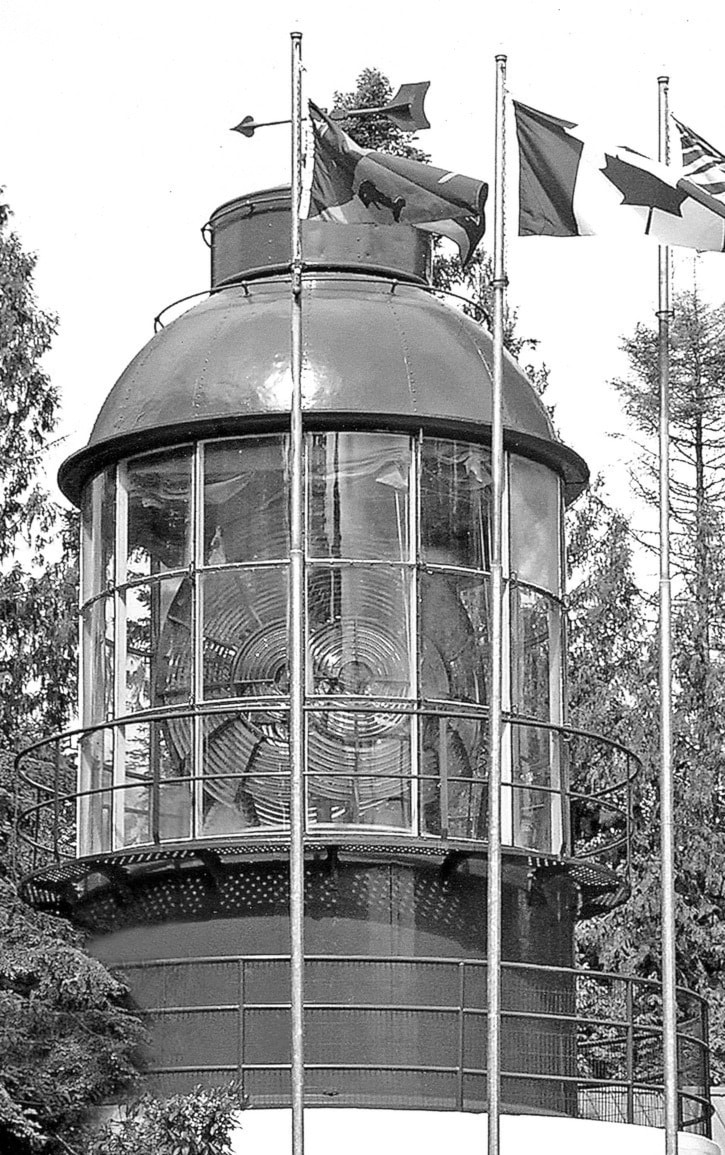Chipped it is, indeed, but it’s ours. The only known item that shows the effect of Japanese forces shelling B.C.’s coast in World War II is now part of Sooke’s landscape.
It was just a few months after Pearl Harbour, in June of 1942, that submarine I-26, commanded by Minoru Yakota, shelled Canadian shores at Estevan Point. While the DOT meteorological station was likely the main target, the lighthouse was in the line of fire as well. Wireless operator E.T. Redford wired, “We are being shelled” while lightkeeper Robert Lally ran up the tower staircase to close down the light.
A 17-year-old lighthouse assistant in 1942, Clifford Martin, now of Nanaimo, recalls the event and the hysteria clearly. At the time of the shelling, he had just been transferred from his lens polishing job at Estevan to the lighthouse at Lennard Island.
For a period during the 1980s it seemed that this significant article of Canadian history would end up in an American museum, but due to the determination of Lanny Seaton and other crew members of the Canadian Coast Guard Station on Huron Street in Victoria, this was not to be.
Fortunately for Canada’s own historical records, it seems that Lanny, currently a councillor in Langford, took a stand, along with the rest of the Coast Guard crew, when faced with an impending visit from representatives of the Smithsonian Institution. Though the group planned to take the incredibly valuable First Order Fresnel Lens back to Washington with them, the men at the base objected, protesting that such a significant part of Canada’s history should remain in Canada.
Soon after the 1906 wreck of the iron steamship Valencia at Pachena Point, with great loss of life, a series of navigational aids including more lighthouses had been established on our coast. A First Order Lens is the largest ever constructed for lighthouse use and at the time both Estevan and Triangle Island (off the north Island) were equipped with these immense many-faceted glass structures. At that time, the lenses rotated in a bed of mercury, but decades later, when the hazard of mercury use was better understood, these lenses were retired and other lighting installed.
Sooke had many friends at the Coast Guard base, and with the help of foreman Donny Clark, who had grown up in Sooke, the hierarchy was persuaded to allow the Sooke Region Museum to acquire ownership of the long-retired Triangle Island Lighthouse dome.
By then it was 2004, and Triangle Island’s original First Order Fresnel Lens was long gone. After the 14-ton dome was transported to the museum in an ingenious feat of engineering, it was mounted on a tower and fitted with the sister First Order Lens that had been retired from Estevan Light when it was refurbished.
Today this historic chipped lens from Estevan Point is seen each day by motorists who drive by the Sooke Region Museum. The second photo shows Pete Fletcher, retired from the Coast Guard, back in 2005, when he was re-assembling the lens sections for mounting at our museum.
Elida Peers,
Historian, Sooke Region Museum
